5 Quick Protein Meals a Doctor Uses to "Drop Weight Fast" on Ozempic
Are you on Ozempic and aren't sure what to eat? Kellie Bader, PharmD, along with Aliza Olive, MD, is one-half of Med Free Maintenance, GLP-1 nutrition experts. In a new social media post, she discusses eating on Ozempic, revealing 5 under-500 under-500-calorie meals that she eats when she wants to drop weight fast. "When I need 30+ grams of protein and less than 500 calories per meal, here are five easy meals I make," she writes across the Instagram video.
Eat More Protein to Burn Fat
She starts by addressing the importance of protein for weight loss. "You've probably heard: Eat more protein to lose more fat and keep lean muscle and to keep the weight off by decreasing hunger, cravings, and food noise," she says in the post.
RELATED: 20 Things You Need to Know About Ozempic and Weight Loss
It Can Be Difficult to Coming Up with Protein-Packed Meals
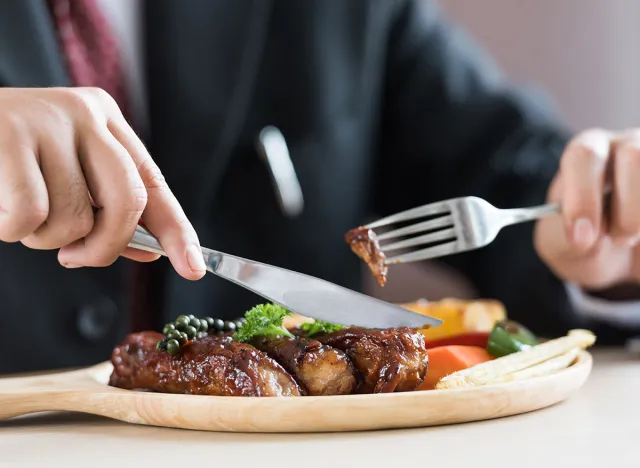
However, this is easier said than done, she acknowledges. "Does it seem like protein meals are time-consuming and take a lot of prep work? Do you just need a few meals so that you can hit your protein goals without a lot of effort? Are you tired of chicken breast and broccoli as your go-to protein meal?"
These 5 Meals Are Easy to Make and Packed with Protein
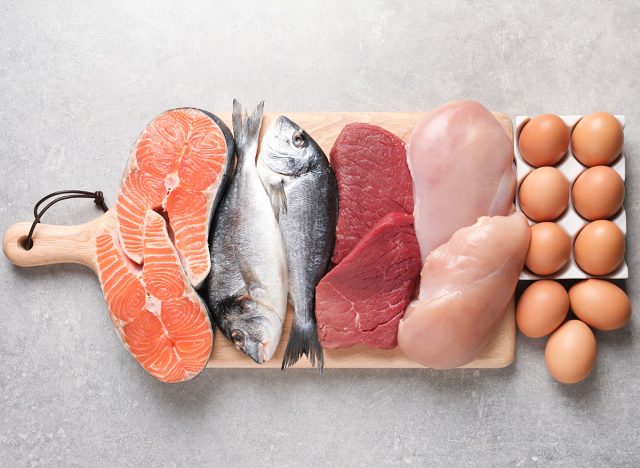
"I got you! When I first started paying attention to protein. I found it completely overwhelming. I was searching recipes constantly, and it felt like a part-time job!" she continued. She goes on to reveal five easy ideas "for those days where you just need something simple!" she writes.
An Easy Egg Meal
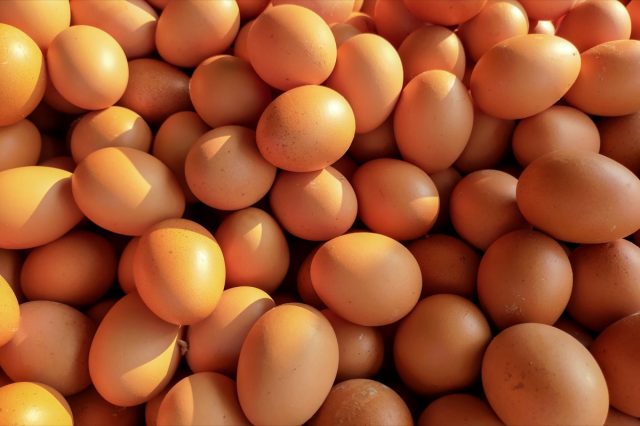
Her first protein-packed meal is an easy breakfast. She pairs Just Crack an Egg protein scramble with 1 egg and 2 servings of egg beaters egg whites. The grand total is 30g protein, 370 calories.
A Chicken Salad in a Bag
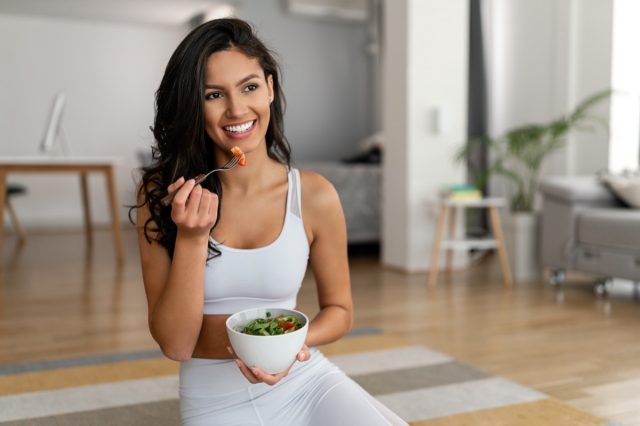
The next meal is a throw together salad. She takes Real Good chicken tenders (5.5 oz) and places them upon ½ a Chopped salad kit. The total? 36g protein and 445 calories.
RELATED: 20 Possible Ozempic Side Effects
Protein Yogurt Parfait
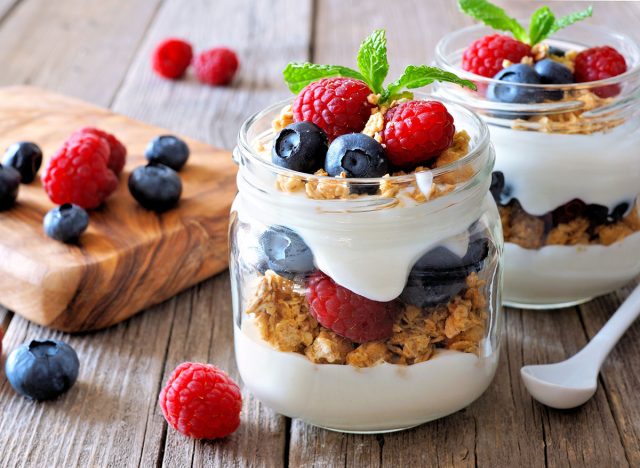
Kellie is one of the many weight loss experts and a fan of protein-packed Oikos Pro Greek yogurt. She recommends topping a cup with raspberries and ¼ cup protein granola for a nutritious snack or meal with 31g protein and 320 calories.
Steak and Potatoes
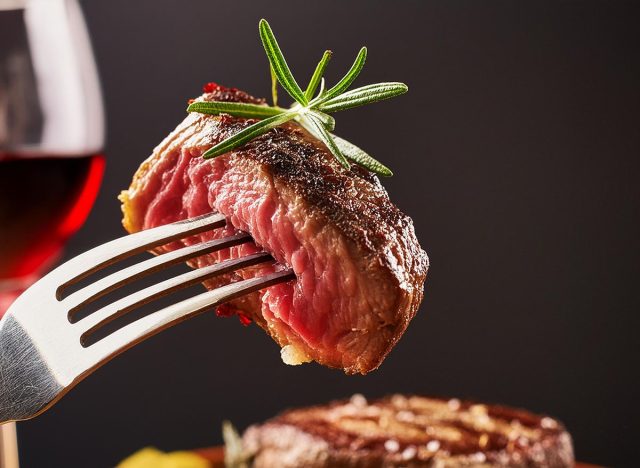
Feeling like an easy steak dinner? One of her go-to's is a KC strip steak with baked potato, butter, and asparagus. It comes to a grand total of 30g of protein and 460 calories.
RELATED: What Happens to Your Body When You Stop Taking Ozempic
Turkey Roll Up and Chips
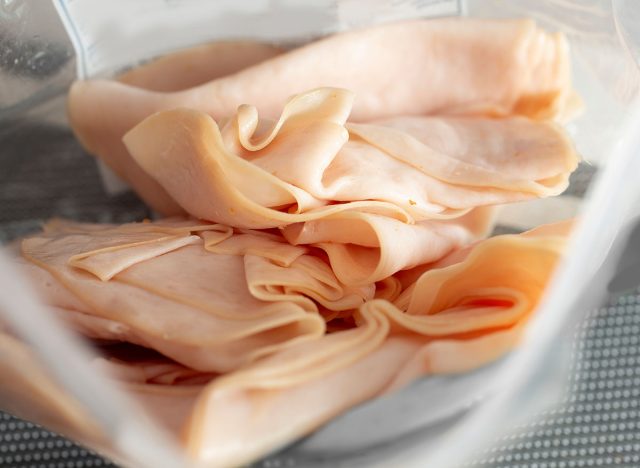
Her last meal involves lunch meat. She uses 4 ounces of deli turkey and rolls it into a tortilla with laughing cow wedge and veggies. She also eats a side of Quest chips. The grand total comes to 43g of protein and 405 calories. And if you enjoyed this article, take advantage of these 15 Quick Ways to Lose Body Fat Percentage in a Week.





